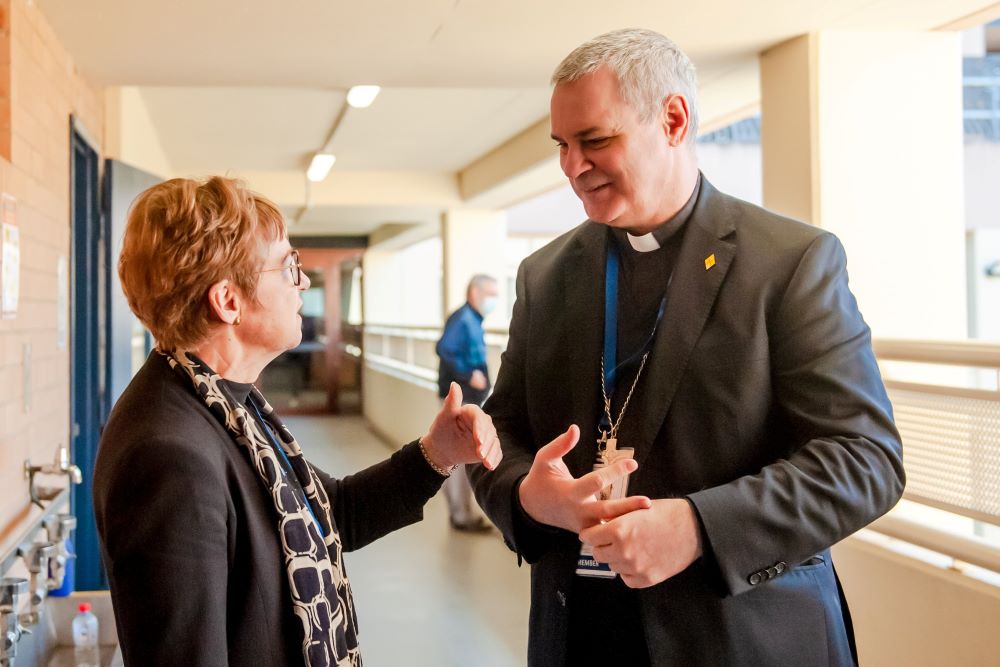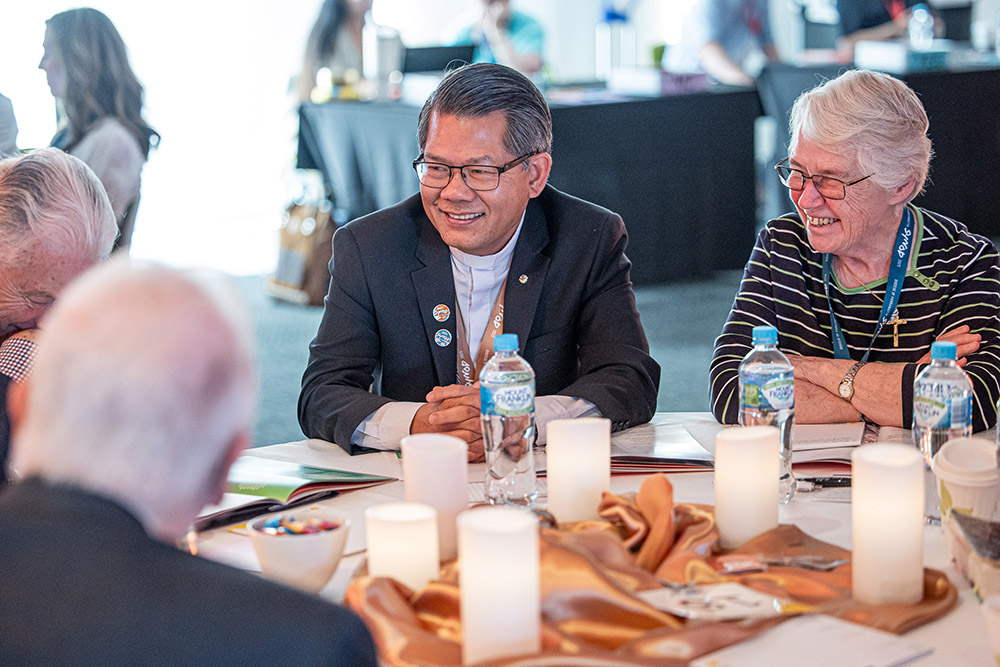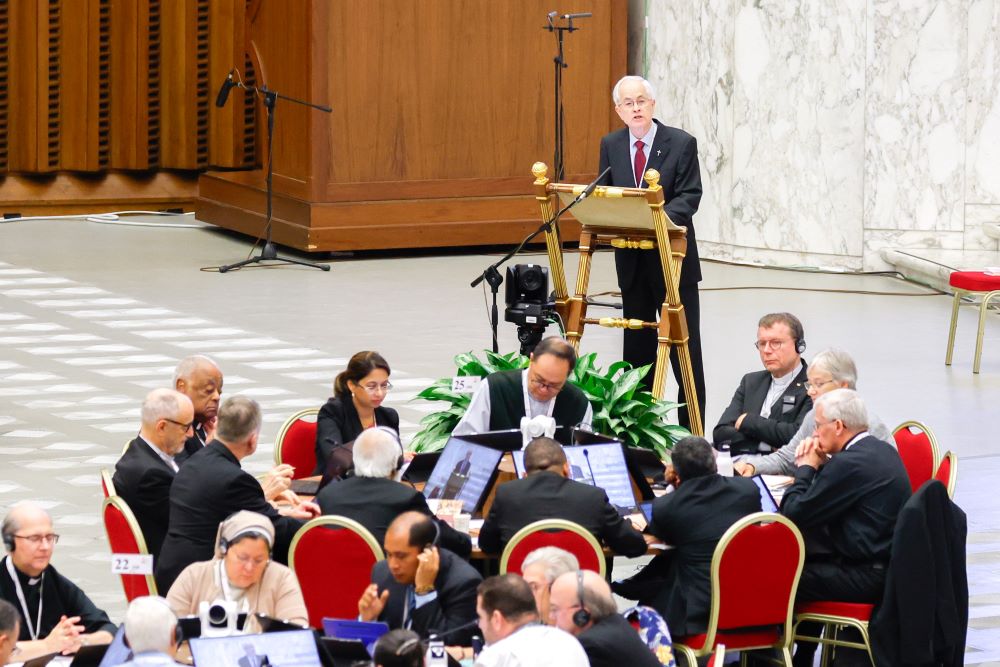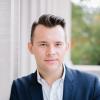
Archbishop Peter Comensoli of Melbourne, Australia, chats with a participant on the final day of the Second Assembly of the Plenary Council of the Australian Catholic church in Sydney July 8, 2022. (CNS/The Catholic Weekly/Giovanni Portelli)
Greeting the crowds in St. Peter's Square after being elected as the first pontiff from the Global South, the Argentine-born Pope Francis joked that it seemed the cardinals had gone "almost to the ends of the earth" to find him.
It appears the Vatican's office for the Synod of Bishops opted for a similar approach when looking to shape Francis' high stakes summit on the future of the Catholic Church.
While less than 20% of Australia is Catholic, its church played an outsized role in shaping the global synod process.
"Australia punched well above its weight," Bishop Vincent Long of the Parramatta Diocese in the western suburbs of Sydney told me last month during a visit to the country for a series of lectures sponsored by the Parramatta Diocese, Australian Catholic University, and Newman College, Melbourne.
In July 2022, some 277 delegates from throughout the country gathered in Sydney for the second assembly of Australia's Plenary Council (the first session was held online due to the COVID-19 pandemic), which functioned as a sort of national synod.

Bishop Vincent Long attends the Oct. 13-15 synod in the Diocese of Parramatta, Australia. (Courtesy of Parramatta Diocese)
Both the style and the substance of that weeklong meeting would prove consequential for the global church.
As is now well known, unlike past Roman synods, the first session of Francis' synod on synodality took place at roundtables, rather than utilizing the stadium-style seating of the Vatican's synod hall. Cardinals and bishops sat shoulder to shoulder with lay people from around the world, who for the first time were also granted the right to vote in the synod.
No longer did synod delegates spend hours listening to prepared remarks, where they could sit back and doze off or check email. Instead, the monthlong synod opted for a new methodology known as "spiritual conversations."
Over three rounds, synod delegates — led by a facilitator — first offered their own individual responses to a theme or question, followed by another round where other participants offered their own reactions to what they just heard. In a final round, they took stock of what had emerged during the active listening and shared participation.
Prayer and meditation broke up each round, and the results of the roundtable discussions served as the basis for shaping the synod's final document.
The origins and inspiration for all this? Australia's Plenary Council, which utilized the same methodology and practices.
'Whenever bishops gather with laity and religious, we just find a seat. … You sit with the people.'
—Archbishop Peter Comensoli
When I met with Archbishop Peter Comensoli of Melbourne — the country's largest diocese — he recalled finding it amusing that there was such a fuss over using roundtables at the synod.
"That's normal here," he said. "Whenever bishops gather with laity and religious, we just find a seat. That is not some amazing new thing. You sit with the people."
As for the conversations in the spirit, a practice rooted in Ignatian spirituality, Comensoli said the Australian bishops utilized the method during their own 2019 retreat outside Rome ahead of their ad limina visits with the pope and Vatican curia officials. The method worked, and they decided to use it again for the Plenary Council.
Comensoli also recalled his time serving as a delegate to the Vatican's 2018 synod on young people, where he was seated based on seniority, determined by ordination year. The non-voting youth delegates were seated at the back of the room, rather than integrated with the bishops.
He recounted a story from his experience as Australia's Plenary Council, when one delegate of Italian origin quipped: "This would never happen in Italy."
Until now.

Fr. Ormond Rush, a theologian from Australia, speaks during a working session of the assembly of the Synod of Bishops in the Vatican's Paul VI Audience Hall Oct. 23. Rush, among Australia's delegation of 13 participants, delivered one of the synod's few prepared talks. (CNS photo/Lola Gomez)
Veteran Australian journalist Geraldine Doogue, who chronicled the Australian experience in her podcast "Plenary Matters," told me that the Plenary Council was both a prayerful and pragmatic journey of working through tough issues. Over time, she said, people got to know each other and the group built trust, even amid difficult circumstances.
She recalled a much-discussed moment in the Plenary Council where some 60 delegates walked out of the meeting in protest over a motion regarding the role of women in the church, including formalized support for the ordination of women deacons. Discussions were eventually suspended and after greater efforts were taken to better understand the varying positions and concerns, new motions were drafted.
In a way, said Doogue, the "slight conservatism of the Australian church shone through" and "moderation became the order of the day."
"Some people say that in Rome we're known as effective but conservative," she continued. "Maybe that is more helpful in the Vatican than the German way which is obviously dramatic," she said. She was referring to the ongoing tensions, where even the pope has expressed "deep concern" about some proposals emerging from the country's Synodal Path.
Reform, Australian style, according to Doogue, means "you creep in the side door" — building slow but steadfast consensus. Following the Plenary Council's success, Doogue said it sent a resounding message: "Now over to you, Rome!"
Advertisement
In the end, Australia clocked in with a total of 13 synod participants in Rome, making it the third largest delegation just behind Italy and the United States. Among them was Fr. Ormond Rush, who delivered one of the synod's few prepared talks. In addition, the president of the Australian Catholic bishops, Archbishop Timothy Costelloe, was tapped by the pope to serve on the seven-member committee that planned the entire summit.
While Down Under, I also caught up with the eminent Australian scholar Jesuit Fr. Gerald O'Collins, who taught for decades in Rome, beginning just after the Second Vatican Council.
At 92, O'Collins — who has authored or contributed to more than 80 books and is still writing — said that when one talks of the conciliar era it risks giving the impression of something that is "a bit static."
But synodality, he said, connotes "travel" and the image of a "community on foot, on pilgrimage."
If synodality is going to work, he said, it means the comfort zones of both Australia and Rome have to be left behind and that the entire church is going to have to go out on actual pilgrimage in the world around it. Only then, said O'Collins, will the synodal journey truly begin.








